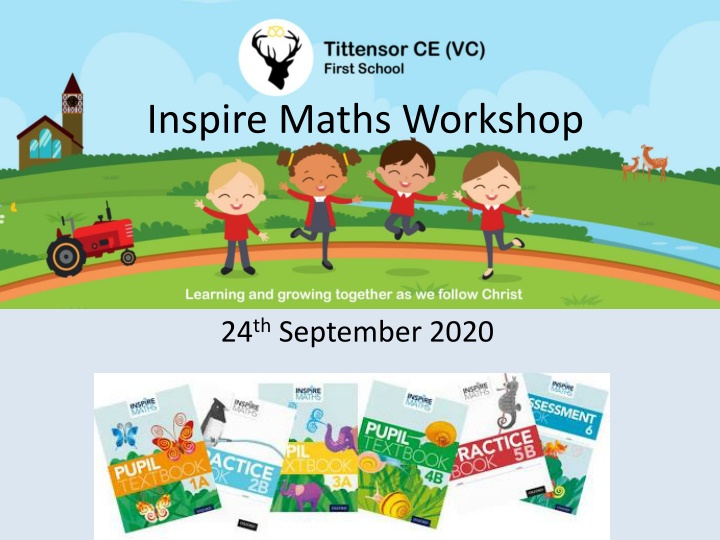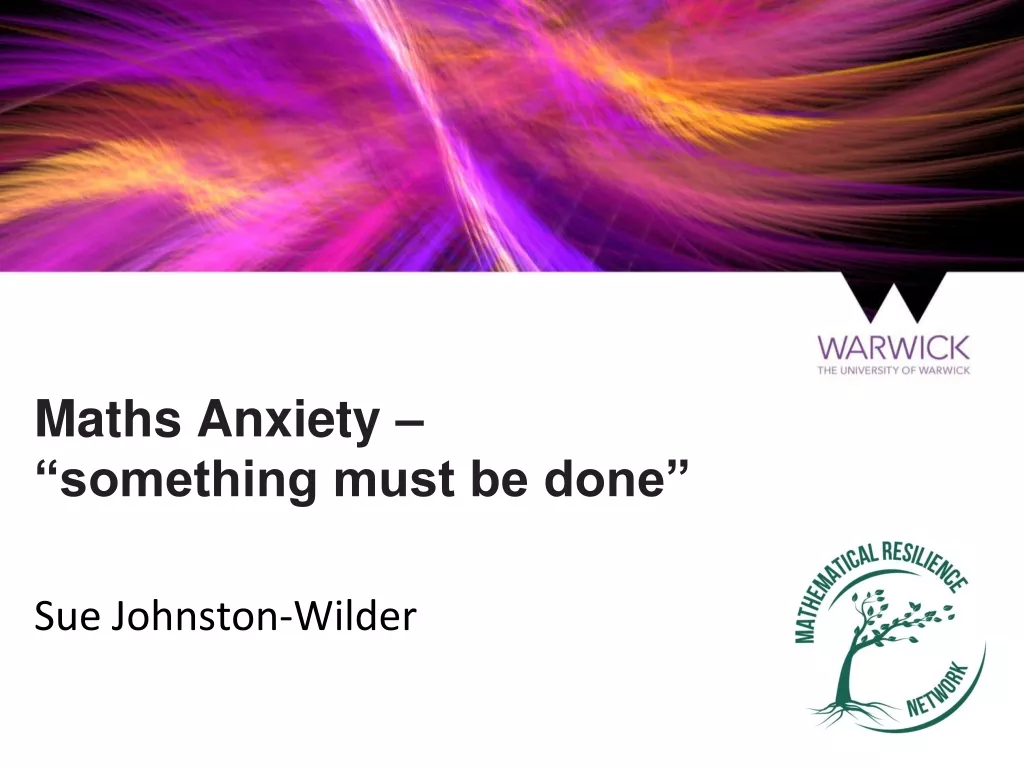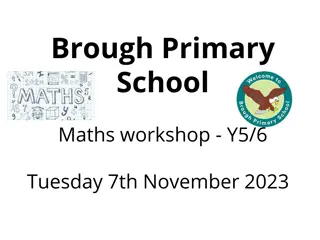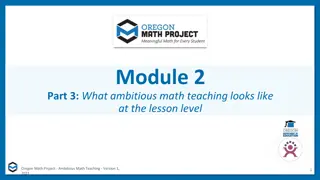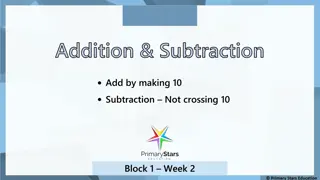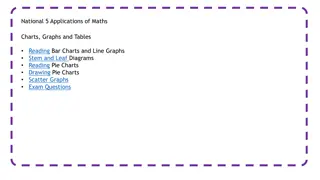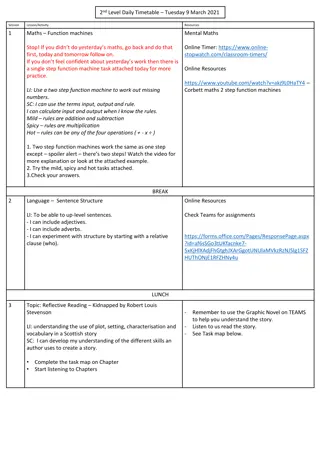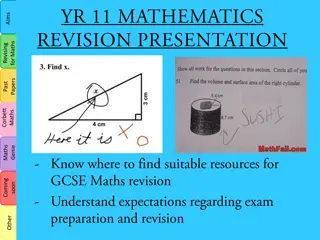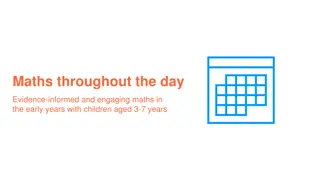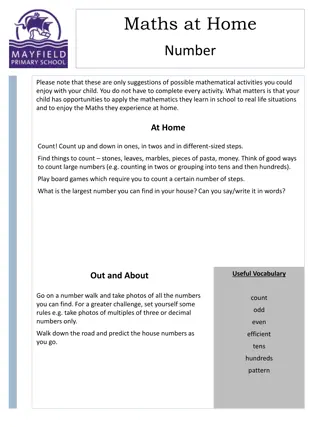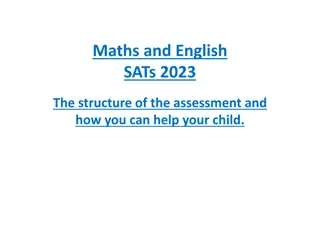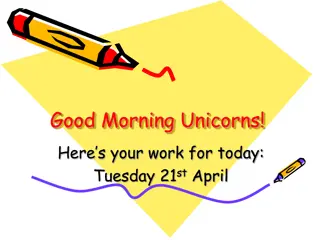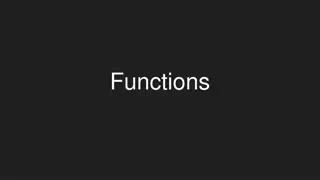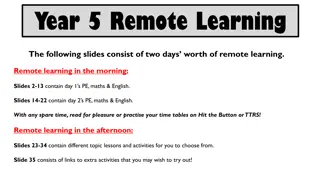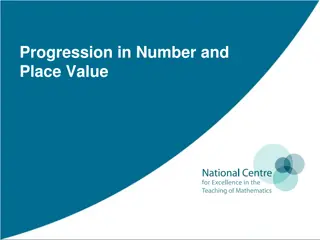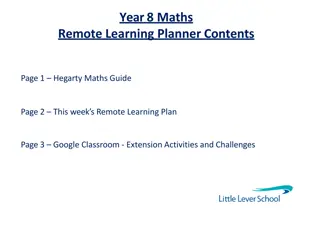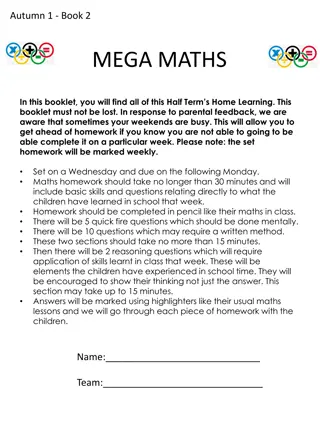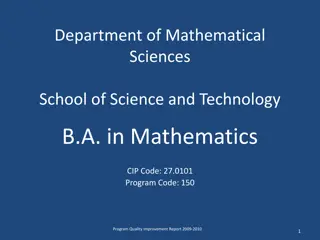Inspire Maths Workshop for Deepening Mathematical Thinking
At Tittensor First School, we implement Inspire Maths to enhance children's mathematical skills through a comprehensive primary maths program based on the renowned Singapore pedagogy. The C.P.A. approach (Concrete, Pictorial, Abstract) is used to foster a deeper understanding of mathematical concepts. Through concrete resources and engaging activities, children progress from early number skills to more advanced mathematical thinking. Explore how Inspire Maths transforms the learning experience, supporting a mastery approach in teaching and learning mathematics.
Download Presentation

Please find below an Image/Link to download the presentation.
The content on the website is provided AS IS for your information and personal use only. It may not be sold, licensed, or shared on other websites without obtaining consent from the author.If you encounter any issues during the download, it is possible that the publisher has removed the file from their server.
You are allowed to download the files provided on this website for personal or commercial use, subject to the condition that they are used lawfully. All files are the property of their respective owners.
The content on the website is provided AS IS for your information and personal use only. It may not be sold, licensed, or shared on other websites without obtaining consent from the author.
E N D
Presentation Transcript
Inspire Maths Workshop 24thSeptember 2020
At Tittensor First school, we use Inspire Maths as a way of improving and deepening children s mathematical understanding and thinking. Inspire Maths is a whole-school primary maths programme that provides everything we need to support a mastery approach to teaching and learning mathematics. It follows the world-leading Singapore pedagogy based on the series My Pals are Here! Inspire Maths develops children's thinking through concrete, pictorial and abstract learning methods. You may have heard of other maths schemes such as Whiterose and Maths no problem which also follow the Singapore maths style of teaching.
C P A approach 3 + 2 = Concrete Abstract Pictorial At this stage, children are building a question using equipment and are physically moving equipment to find an answer. At this stage, children are using numbers to represent amounts. At this stage, children are using drawings/workings out to solve questions.
C P A approach Concrete approach Within Reception, Year 1 and Year 2 children are provided with a variety of concrete resources to solve questions such as: Numicon Cubes Multi-link Counters Dienes Within Year 3 and 4, children are encouraged and are able to use concrete resources to support their learning and also as a way of checking work. However, by the time they reach KS2, children are using the pictorial and abstract approach. To see examples of how the CPA approach is used to solve a variety of different types of questions within our school, please see our Maths calculation policy on our school website. Over the next few slides you will find your child s year group national curriculum aims. Please have a read through to find out what your child will be learning about during this academic year.
In Early Years children are taught to. Numbers Use numbers in their play To recite numbers To understand that numbers represent how many objects are in a set Read and write numbers. Solve number problems Shape, Space, measure Begin to use mathematical names for 2D and 3D shapes Order items by length, height, weight, capacity Use everyday language related to time and money Order and sequence events Number Blocks is a great online resource where your child can sing along and learn all about numbers. https://www.bbc.co.uk/cbeebies/ shows/numberblocks The Early Learning Goals are the combination of all of this learning.
What does mastery in maths look like? The key idea of mastery is that children gain a deep understanding of the mathematical concept being taught, so they can apply it to new situations and contexts. To develop mastery in maths, children often use their reasoning skills rather than just moving on to using bigger numbers. Below is an example of some KS1 reasoning questions:
Important information When your child reaches Year 2, they will sit their KS1 SATs. These normally take place during the month of May. In Year 4, your child will sit a Multiplication check. The purpose of the check is to determine whether pupils can recall their times tables fluently, which is essential for future success in mathematics. To support your child at home there are a variety of online resources and games that you can access: TTS rockstars ICT games website Top Marks website You can also support your child s mathematical reasoning at home by asking them four types of questions such as: Explain: how did you reach your answer? explain the problem in your own words Convince me: how do you know that is correct? can you prove that the answer is wrong? Prove it: show me your method Can you find the answer using another method? Evaluate it: why would it be better if you did it this way? does your method work all of the time?
